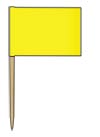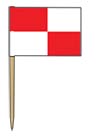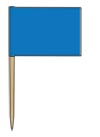Simple safety tips
If you're worried about staying safe at Schoolies, we’ve come up with a list of easy and practical tips to help you stay safe so you can have an enjoyable Schoolies for all the right reasons.
Stick together
- Always go out with at least 1 other friend.
- Pre-arrange a meeting place in case you're separated from your friends.
- If a friend wants to head back to your accommodation, don’t let them walk alone. Either go with them or ask a volunteer team to walk with them.
- If you decide to go back to someone else’s apartment, always make sure that you have one of your friends go with you.
Other simple safety tips
- Before you head to Schoolies, make sure your friends know how to contact your family or carers if there's an emergency.
- Keep credit on your phone and make sure it’s always fully charged before you head out.
- Have $20 stashed away somewhere safe (e.g. in your shoe) in case you need to take a taxi or catch public transport.
- Make sure you always carry photo ID.
- Make sure you download the Emergency+ app. It'll assist in finding your location and contact support services in an emergency.
- Don't forget to set up your Medical ID on your smartphone. You can set up your Medical ID on your phone to store critical health information that can be accessed by first responders in emergencies. If you're using an iPhone you will find it in the Health app. If you have an Android phone you can find it under Safety and Emergency in your phone's settings.
- Familiarise yourself with the support available on the ground at Schoolies on the Gold Coast and the support you can access from anywhere if you need it during Schoolies week celebrations.
On the go
Getting around Surfers Paradise is easy, as most things are within walking distance.
You can also take the tram from Surfers Paradise to get to other popular spots like Broadbeach or The Broadwater.
If you plan on riding a bike, driving or hiring a motorised transportation on the Gold Coast, make sure you're aware of the laws and your responsibilities.
Hiring motorised transport
When you hire motorised transport, you'll be entering into a legal contract. It's important to know your rights to avoid any extra charges.
Make sure your driver’s licence is current and confirm with the hire company any restrictions so you know where you can and can’t drive.
Motorcycle, mopeds, motorised scooters and e-bikes
- Be aware of pedestrians as they may not hear or see you approach them.
- Take it easy if you're on 2 wheels. Motorcycle/moped riders have a very high crash rate in their first years of riding, regardless of their age.
- Stay sober and stick to the speed limit.
- Respect the local community by keeping horn blowing to a minimum.
- Only ride your vehicle in the designated areas and stay off the footpaths.
- Bicycles must have and use pedals as the primary source of power, whether the bicycle is standard or power assisted. The rider must pedal to propel the bicycle forward and an electric motor must only assist the rider with pedalling.
- Bicycles with motors that operate at speeds above 25km/h are more like mopeds and motorcycles. They're only legal when they comply with Australian Design Rules and are registered for road use. Riders must wear a motorcycle helmet and must have relevant driver's licence. They also can't ride on footpaths.
Find information on what makes an e-bike compliant/non-compliant.
Visit Motorcycle safety for tips on how to be aware, take care, and survive when riding a motorcycle.
Driving
- Don’t drink and drive or get in the car with a drunk driver – you could lose your licence or your life.
- Leave the car at home or at the party and catch a taxi, bus, tram or get a lift with a friend who has not been drinking alcohol.
- Driving when affected by drugs is illegal and extremely dangerous as they make you drowsy, reduce your alertness, concentration, and coordination.
- If you’re on your learners or provisional licence, you must have a zero blood and breath-alcohol concentration when driving. You've only just got your licence – don’t lose it.
- After a big night (or week) of partying, don’t drive until you're well-rested and alert because you could still be over the limit.
- If you're driving long distances, take breaks at least every 2 hours and share the driving with mates.
Public transport
Trams are available from Surfers Paradise and they are a safe and easy way of getting around.
A go card will give you access to trams , buses and trains. You can plan your journey ahead of time using the Translink Journey Planner.
Water safety
A lot of things can go wrong when you're enjoying the sun and surf, especially if you've been drinking or using drugs.
Water and alcohol don’t mix – alcohol is a factor in 1 in 5 drownings.
If you've had a few drinks or you're under the influence of drugs, then stay out of the water. This includes:
- the ocean
- pools
- baths
- spas.
Swimming at night at the beach or in a pool is dangerous; if you get into trouble, lifeguards aren't on duty and help may not arrive until it's too late.
The effects of alcohol increase when you're in the sun for prolonged periods of time.
Surf safety
If you’re keen to check out the surf, make sure you always swim between the red and yellow flags.
Red and yellow flags aren’t the only ones you may see at the beach.
 A yellow flag indicates potentially dangerous conditions so be cautious.
A yellow flag indicates potentially dangerous conditions so be cautious.
 A red and white chequered flag means a shark or crocodile has been sighted. Get out of the water fast!
A red and white chequered flag means a shark or crocodile has been sighted. Get out of the water fast!
 A red flag means the beach is closed for swimming.
A red flag means the beach is closed for swimming.
 A blue flag shows board-riding areas for surfers.
A blue flag shows board-riding areas for surfers.
Rips
When you’re heading back to shore, compare your distance from the beach with a landmark onshore. If you've been swimming for a while but not getting any closer to the landmark, chances are you're in a rip.
If you're caught in a rip, obey the ‘3 Rs’:
- Relax – stay calm and float, don’t swim against the current, swim across it.
- Raise – an arm to signal for help.
- Rescue – float and wait for assistance. Don’t panic—a lifeguard will be out as soon as possible.
For more information about beach safety visit Surf Life Saving Queensland.
Sun safety
- Slip on clothes that will protect you from UV rays.
- Slop on sunscreen (SPF50+) 20 minutes before you go out into the sun. Reapply every two hours.
- Slap on a hat that protects your face, neck and ears from being burnt.
- Seek shade – trees, sails, beach umbrella etc.
- Slide on some sunnies.
For more information, visit Hot weather health and safety .